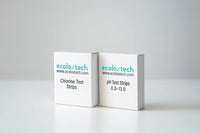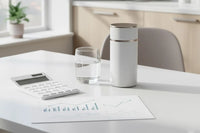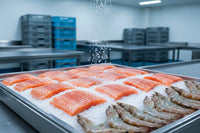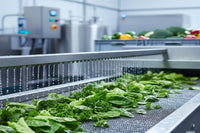In food processing, water is lifeblood.
It rinses, sanitizes, transports, cools, and cleans. But it also leaks silently from your balance sheet, your sustainability targets, and your long-term viability. Because behind every sanitation cycle powered by bleach, quats, or chlorine dioxide lies a hidden culprit: post-rinse protocols.
These rinses—required to wash away chemical residue—consume tens of thousands of gallons per week. And you’re paying for that water twice: once when it comes in through your municipal line, and again when you treat or dispose of it on the way out.
In an era of rising water costs, tightening environmental regulations, and growing public scrutiny of food industry practices, this is no longer a silent issue. It’s a growing liability.
And the solution is more than a minor upgrade. It’s a total reimagination of your sanitation protocol—from chemical-based to closed-loop, rinse-free, and radically efficient.
Welcome to the HOCl era.
The Bleach Burden: Why Traditional Sanitation Protocols Waste So Much Water
Let’s be blunt.
Sanitizing with bleach (or any legacy chemical like chlorine dioxide) isn’t just dangerous—it’s incredibly wasteful.
Here’s how the cycle typically works in a standard processing environment:
- Equipment or surfaces are sprayed with a chlorine-based disinfectant.
- Workers wait a designated contact time (often 5–10 minutes).
- A full post-rinse is conducted to remove residual chemicals before food contact resumes.
That rinse step is mandatory. Chlorine, quats, and ozone-based solutions leave behind toxic residues that must be flushed off completely to avoid contaminating the product. It’s written into most SOPs, HACCP plans, and third-party audit checklists.
But each rinse consumes between 3–15 gallons of water per surface area—depending on your spray nozzles, pressure, and surface geometry.
Now multiply that by:
- Every line
- Every conveyor
- Every batch zone
- Every shift
It’s not uncommon for even mid-sized plants to burn 20,000–50,000 gallons of water daily just on rinse-downs.
And that’s assuming everything runs perfectly. Delays, re-cleans, and audit-triggered deep sanitations only increase the toll.
The Compliance Trap: We’re Not Wasting Water Because We Want To
No QA lead wants to be wasteful. But regulations, audit expectations, and chemical limitations force our hand.
The moment your disinfectant becomes a hazard if left behind, you’re committed to a cycle of rinse-and-waste. And you’re stuck doing it every day.
This is where hypochlorous acid (HOCl) breaks the loop.
HOCl: A No-Rinse Revolution That Doesn’t Cut Corners
HOCl is not just an eco-friendly buzzword. It is a USDA, FDA, EPA, and NSF-approved disinfectant with broad-spectrum kill power and zero rinse requirement.
Let’s break that down:
- No rinse required. HOCl can be left on food contact surfaces, sprayed directly on produce, and fogged into RTE areas—all without a water rinse.
- pH-neutral. Unlike bleach, it won’t corrode stainless steel or leach into cracks.
- 100% residue-free. It degrades into water and trace salt ions—completely safe for humans and the environment.
That single change—no post-rinse—results in instant and significant water savings.
Let’s Run the Numbers: Real Water Savings from Real Plants
At a poultry processing facility in Arkansas, switching to HOCl reduced rinse water usage by 38% in the first 60 days.
At a produce packaging facility in Salinas, California, the elimination of rinse cycles cut average daily water use by 41%, triggering immediate rebates from their municipal water authority.
A frozen seafood packer in New Jersey using an Eco Max HOCl generator was able to shut down an entire secondary rinse system that once ran 4 hours per day, 5 days a week—saving over 8,500 gallons weekly.
These aren’t hypothetical case studies. These are EcoloxTech deployments in the field, producing measurable environmental and financial benefits.
But What About Effectiveness?
The obvious question: if you eliminate post-rinse, doesn’t that mean leaving something behind?
Yes. And in this case, you want to.
HOCl, unlike bleach, continues to protect the surface for a short period after application. This offers an extended barrier effect—killing microbes not just during the initial contact but in the moments after. That means:
- Safer surfaces between shifts
- Fewer microbial spikes on contact plates
- Improved audit scores across the board
And because there’s no rinse step, sanitation teams can move faster, reducing downtime between production cycles.
Environmental Pressure Is Mounting—And So Are Costs
Water rates in the U.S. have increased over 80% in the past 12 years. Wastewater treatment surcharges are rising. And sustainability mandates are now embedded into supply chain contracts with major retailers.
If your plant can’t show active water reduction efforts, you risk:
- Losing bids from Whole Foods, Costco, or Walmart (all of whom now require sustainability data)
- Falling behind in ESG reporting (a growing requirement for public and investor-facing companies)
- Triggering extra scrutiny during GFSI and BRCGS audits
And yes, in some counties, simply using bleach-based rinse water in storm drains can result in fines.
Switching to HOCl isn’t just a production upgrade—it’s a strategic compliance move.
Install Once. Save Daily.
EcoloxTech HOCl generators plug directly into your sanitation workflow. No chemicals delivered. No dilution guessing. No delays.
Each model—Eco One, Eco Pro, and Eco Max—produces HOCl on-site using your own water supply and salt.
Once installed, you can:
- Eliminate or drastically reduce post-rinse cycles
- Track water savings month-over-month
- Report sustainability gains in real time to stakeholders
And because there’s no need to rinse HOCl away, your floors dry faster. Your labor hours drop. And your energy costs shrink from reduced pump usage.
Final Word: Rethink the Flow
We’ve been trained to think of water loss as a “necessary evil” in sanitation. But it’s not.
It’s a design flaw in the old system.
The new system—rooted in HOCl—is cleaner, faster, safer, and dramatically more sustainable. It isn’t a tradeoff between safety and efficiency.
It’s the first time you get both.





